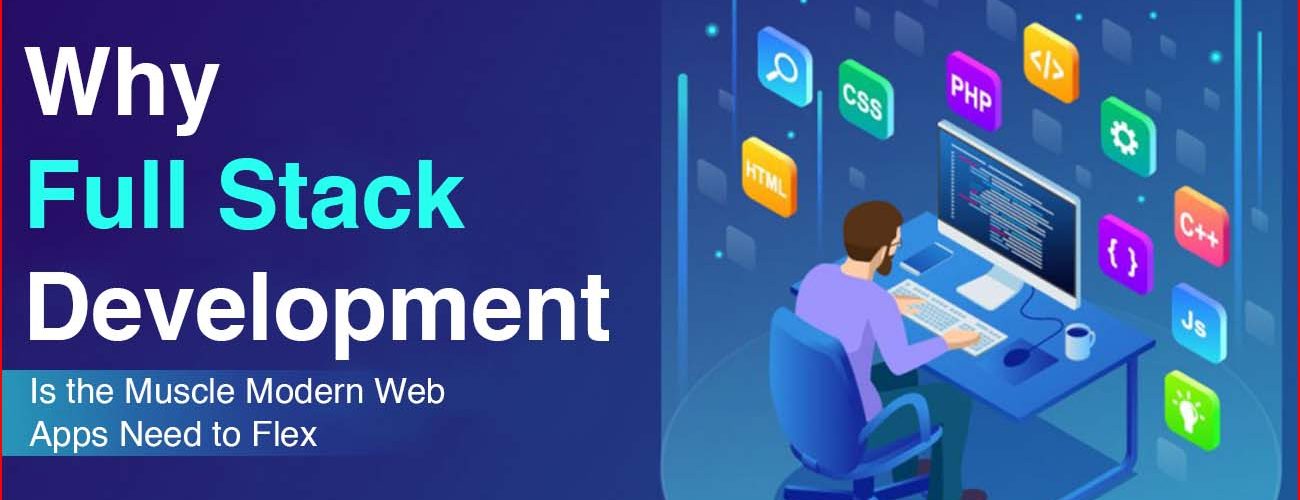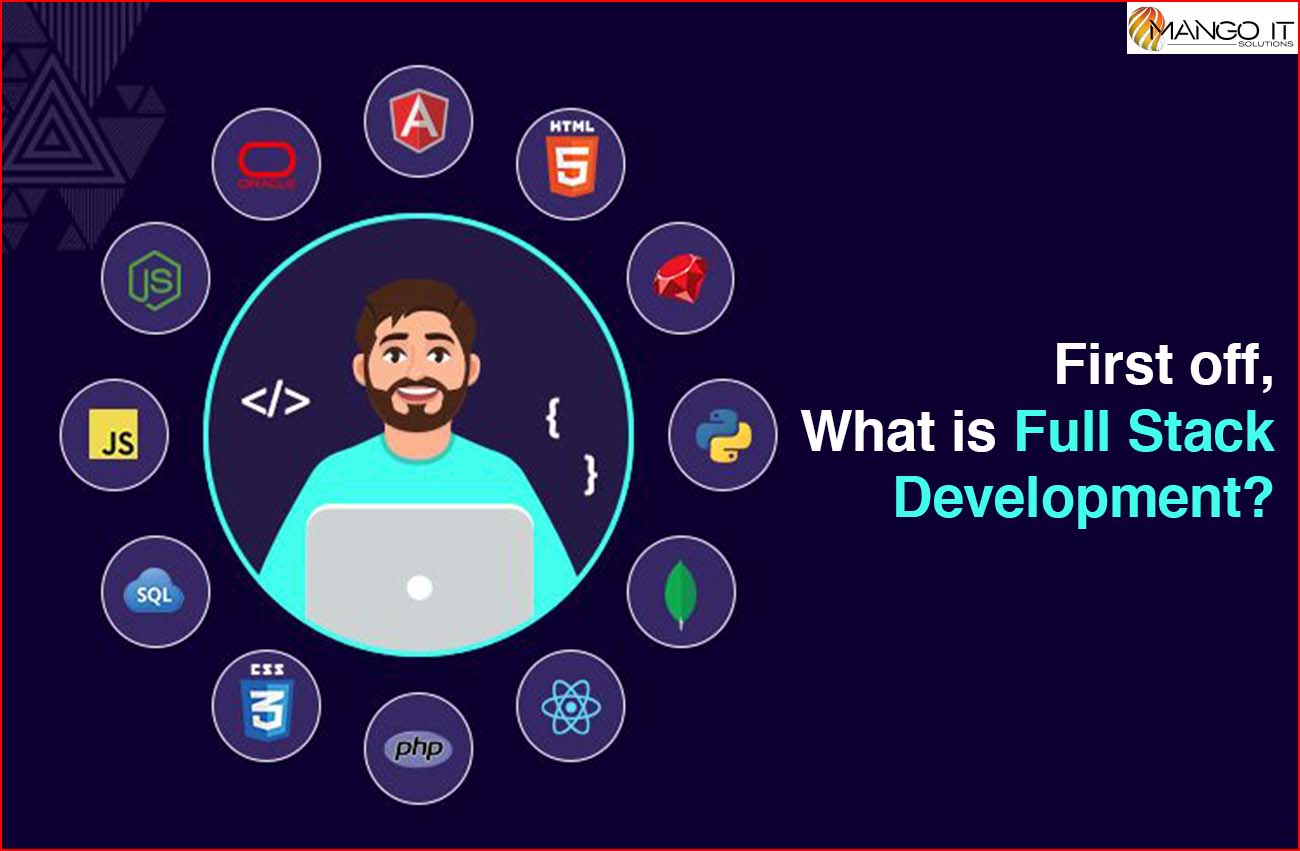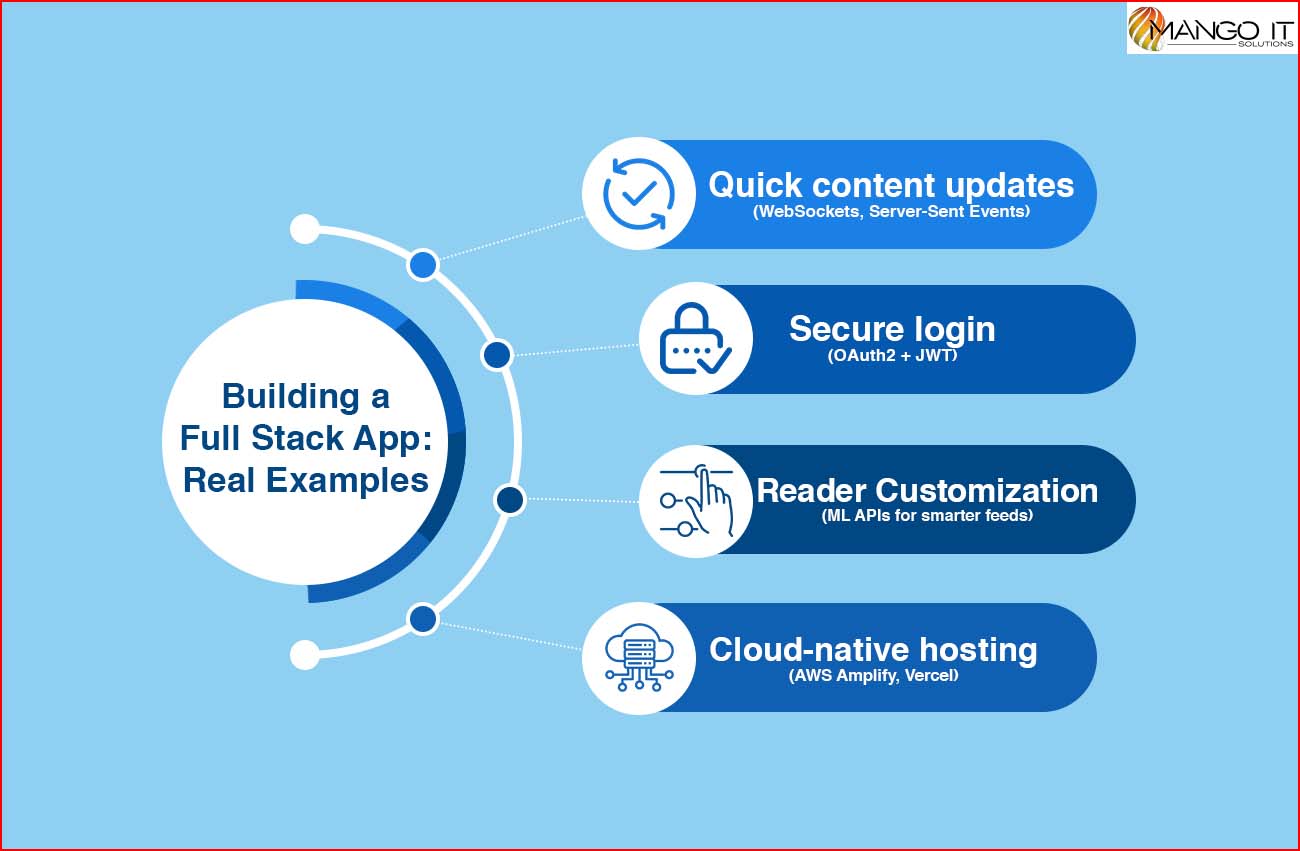
Why Full Stack Development Is the Muscle Modern Web Apps Need to Flex
If you are thinking that building a web app in this highly competitive world is just like making a cup of tea but throwing in sweet sugar and a flavorful database, well, you can not be more wrong and on your way to losing the competition.
Modern web application development asks for versatility, where one has to know everything. That’s why hiring a full stack developer is not just a smart choice — it’s a strategic one.
This is where the role of full-stack developers comes in handy, where they are the heavyweight champions of web engineering.
Whether you are a newcomer in building full-stack websites or looking to manage a billion-user platform, all require an expert who knows the entire game of web development.
So what makes us say that full-stack development is a negotiable deal, because it really is not. Let’s go ahead with the direct details to understand why it is important.
First off, what is Full Stack Development?

To clarify, full-stack development is not about knowing a bit of front-end and a little of back-end, but it is more about being an expert in both.
Full-stack development is a compilation of complete web and app development expertise from pixel-perfect UIs to database schemas, server-side logic, and even cloud deployments.
Meaning, it’s the complete meal, not just some snack!
You’re not building just another app that will gather dust. You’re building a full-stack web app equipped to handle real-world challenges — from heavy traffic and cyber threats to device diversity and high user expectations — and thanks to AI-powered web solutions, you’re building one that’s smart enough to stay ahead.
Why Full Stack Development?

(Know Why Your App Will Fail Without It)
- One Brain = One Vision
If you know anything about the process of web app development, you know communication between the front-end team and the back-end team can break down because of a lack of understanding. That’s why many apps end up clunky and confusing.
That’s where the power of a full-stack developer team — or better yet, a specialized MERN stack development company — truly shines.
These teams operate like a one-man army, responsible for everything from user experience to server-side logic.
They keep in mind the requirements of the user’s journey and the server’s heartbeat.
The results you will see will blow your mind because they result in Clean, consistent, and crazy-fast applications.
For example, Netflix switched from a monolithic architecture to microservices, getting the best out of full-stack engineering to connect a React frontend with a Node.js backend. Speeding up everything from loading to user customization.
Question: Isn’t a different expert team for each better for “specialization”?
Answer: Oh! You bet- if you enjoy 4x the meetings and 3x the bugs.
- Scale Without Sweat
What do you think you would do if your app goes down overnight?
(And no, it’s not if—it’s when.)
Understanding the mobile app development process steps can prepare you for these scenarios.
When you follow a full-stack approach, scalability becomes part of your architecture from the beginning.
You can grow horizontally — adding more databases and servers — without rewriting half your app.
For example, WhatsApp didn’t scale from 50 million to 2 billion users with a fragmented team. They had a full-stack team dedicated
If you develop a web app using full-stack principles, you grow horizontally, including more databases and servers for development without rewriting half your app.
For example, WhatsApp did not scale up from 50 million to 2 billion users with a fragmented team. They have a full-stack team dedicated to creating efficient system design, server efficiencies, and real-time delivery.
- Speed to Market = Survival
Markets are quick to move ahead with technology, and users move on faster.
If you are still coding on an older version and the user has moved to the latest one, you will lose to the competitors who are using the latest language.
In today’s fast-paced development environment, the debate of MEAN stack vs MERN stack vs full stack is more relevant than ever.
Each stack offers unique benefits — from seamless JavaScript integration to flexible deployment options — and understanding which one suits your project is key to staying ahead.
You can use full-stack development languages like MERN, MEAN, and T3 Stack (Next.js + tRPC + Tailwind) for quick deployments without any delay caused by back-end handovers or front-end blockers.
According to Forrester Research, teams that use full-stack technology deploy products 37% faster.
Question: Should I still develop the web app scratch?
Answer: Sure, only if you hate sleeping.
Okay, but what full-stack frameworks are worth my time?
Here’s the shortlist real devs are actually using:
| Framework | Why It Works | Best For |
| MERN (MongoDB, Express, React, Node.js) | End-to-end JavaScript, giant ecosystem | SaaS, social networks |
| Django + React | Python’s security + React’s flexibility | Healthcare, finance |
| Spring Boot + Angular | Enterprise-grade beasts | Banking, enterprise apps |
Secret Weapon: If you are looking for something easy and lighter, there is a full-silver stack movement that is minimalistic, serverless-first frameworks such as Astro.js, Firebase, and Supabase. Fast, cheap, global.
Building a Full Stack App: Real Examples

Want to create a full-stack news agency app?
Here’s what you’ll need:
- Quick content updates (WebSockets, Server-Sent Events)
- Secure login (OAuth2 + JWT)
- Reader Customization (ML APIs for smarter feeds)
- Cloud-native hosting (AWS Amplify, Vercel)
In simpler terms, a complete web application full stack with real-time oomph and military-grade reliability.
The Rise of Full Silver Stack: Lighter, Meaner, Faster
Big and lengthy frameworks are out of the picture.
The star newcomer of the market is full silver stack, and it offers features like small, modular, API-first, edge-deployed apps that can convert into zero to global at the snap of a finger.
Ideal for modern web needs such as real estate website development, this stack allows developers to build highly responsive, scalable platforms that meet the dynamic demands of today’s users.
Stacks like:
- SvelteKit + Supabase
- Astro + Cloudflare Workers
- Vite + Serverless functions (AWS Lambda)
According to VentureBeat (2024), the app built using silver stack architectures cuts hosting costs by up to 40% while serving users 30% faster.
Future of Web Apps: No Room for Half Measures

The future of web apps lies in the hands of developers who can:
- Code from front to back
- Design for edge and cloud
- Think system-wide, not screen-by-screen
And guess what, what are these developers called?
Yes, you guessed it right, full-stack developers.
Full-stack web app development skills are gonna be success-defining for Web3, AI-native apps, and decentralized finance (DeFi).
Final Mic Drop
For the last fact check, it is easy to say that if you are not focusing on full-stack development, you are ignoring modern times’ needs for web and app development. Simple as that.
If you are dedicated to building a battlefield-worthy web app that can not only survive but win over the competition, you require expertise and speed from full-stack developers.
Mango IT Solutions is a full-stack development company loaded with expertise and ready to help you dominate.
Start building your next full-stack web app, and win it in the advanced future of web apps. Get a Free Full Stack Consultation Today!
Ready to roll? Let’s talk full stack.





